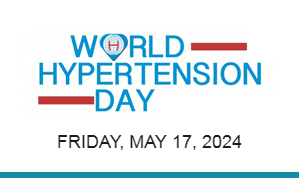Hypertension 2008
Since the U.S. Joint National Committee on Prevention, Detection, Evaluation, and Treatment of High Blood Pressure first introduced a new category of blood pressure (BP) – prehypertension – debate has continued regarding just what to do with these patients. The change was based on evidence from the Framingham study indicating that such individuals, at all ages, have an increased risk of developing hypertension compared to those with a BP <120/80 mmHg (termed “normal’ BP). The ESH/ESC Guidelines Committee, however, does not use this terminology.
A session at Hypertension 2008 reviewed what is also called “high-normal” blood pressure (BP): 120/80 to 139/89 mm Hg.
Stevo Julius, MD, ScD (University of Michigan, USA), noted that hypertension starts very early. Back in 1990, as part of the TECUMSEH project investigating the evolution of hypertension in a healthy population, he reported that adult borderline hypertensives had higher childhood and young adult blood pressures compared to normotensive adult subjects. (1)
Also, he noted, hypertension is a self-accelerating disease. When prehypertension or hypertension is left untreated, BP levels and morbidity will increase over time in a manner that is more exponential than linear. Moreover, individuals with prehypertension have an increased risk of developing cardiovascular disease relative to those with optimal BP levels and, according to data from the large MRFIT study, and they have a greater risk of dying from coronary artery disease compared to normotensives.
Prehypertension also is associated with numerous abnormalities that increase cardiovascular risk independent of BP. Based on the TECUMSEH BP Study, for example, Dr. Julius and colleagues reported that individuals with borderline hypertension were significantly more likely to have high total cholesterol, low HDL, higher levels of triglycerides, insulin, and glucose, and to weigh more (all <0.001 versus normotensive study participants).
He also noted that prehypertension and stage 1 hypertension are the deadliest forms of high blood pressure. Based on cardiovascular mortality data for 164,685 men with prehypertension and hypertension, fully 79% of deaths over a 15 year period were among men with systolic blood pressure that showed either prehypertension or stage 1 (140-159 mm Hg) hypertension.
Treating Prehypertension
How do these patients respond to therapy? Dr. Julius was first author of the TROPHY study that sought to determine whether 2 years of treatment with candesartan (16 mg daily) could prevent or postpone the development of stage 1 hypertension. (2) After 2 years of randomized therapy in 772 individuals with prehypertension, active treatment led to 66% relative risk reduction in the development of hypertension compared to placebo (p < 0.001). After discontinuation of study medication in the candesartan group, when all participants in the two groups were receiving placebo, the incidence of hypertension in the candesartan group increased but the Kaplan-Meier curves remained separated until the end of the study. Treatment with the angiotensin receptor blocker was safe and well tolerated.
New data were presented at this Hypertension 2008 session from the Prevention of Hypertension with the ACE inhibitor Ramipril in Patients with High-Normal Blood Pressure or PHARAO study. (The data appear in the July 2008 of the Journal of Hypertension). (3) A total of 1008 participants with prehypertension were randomized to a ramipril treatment group or a control group and followed for 3 years. One hundred and fifty-five patients (30.7%) receiving ACE inhibitor therapy and 216 (42.9%) in the control group reached the primary endpoint (manifest hypertension), for a relative risk reduction of 34.4% (p = 0.0001) with ramipril treatment. A significant difference in progression to hypertension was evident after 1 year.
Clinicians should also think beyond BP therapy for patients with high-normal BP. Since prehypertension usually occurs in the presence of one or more other major risk factors, Jan Östergren, MD, PhD, Karolinska University Hospital, Stockholm (Sweden), recommends combining effective BP and dyslipidemia therapy. The additive effect of cholesterol and BP has been known since at least the 1992 publication of data from MRFIT and the additional risk associated with multiple risk factors is recognized in the 2007 update of the ESH guidelines for treating hypertension.
Evidence certainly suggests that optimal risk reduction is achieved when both BP and cholesterol are targeted and the benefits may be more than additive. Recent studies suggest a synergy between statin therapy and antihypertensive therapy, such as the ASCOT trial reported by Dr. Östergren and colleagues. (4) Given the evidence, Dr. Östergren said, the polypill concept could increase compliance and efficacy of treatment.
Finally, based on the vascular protective actions of renin angiotensin system blockade, Prof. Thomas Unger, Chair of Pharmacology and Director of the Institute of Pharmacology at the Charité – Universitätsmedizin Berlin (Germany), recommends considering these agents in patients with prehypertension and multiple risk factors.
As to current guidelines, the emphasis remains on lifestyle modification for all early phases of hypertension, but Dr. Julius disagrees. He argues that this has failed as a public health approach, is not affordable to a large segment of the population and, therefore, pharmacological intervention is more efficacious.
“Current recommendations for management of prehypertension,” he said, “amount to an eloquent invitation to failure.”
References:
- Julius S, Jamerson K, Mejia A, Krause L, Schork N, Jones K. The association of borderline hypertension with target organ changes and higher coronary risk. Tecumseh Blood Pressure study. JAMA 1990;264:354-8.
- Julius S, Nesbitt SD, Egan BM, et al.; Trial of Preventing Hypertension (TROPHY) Study Investigators. Feasibility of treating prehypertension with an angiotensin-receptor blocker. N Engl J Med 2006;354:1685-97.
- Lüders S, Schrader J, Berger J, et al. The PHARAO study: prevention of hypertension with the angiotensin-converting enzyme inhibitor ramipril in patients with high-normal blood pressure – a prospective, randomized, controlled prevention trial of the German Hypertension League. J Hypertens 2008;26:1487-96.
- Sever P, Dahlöf B, Poulter N, et al. Potential synergy between lipid-lowering and blood-pressure-lowering in the Anglo-Scandinavian Cardiac Outcomes Trial. Eur Heart J 2006;27:2982-8.





